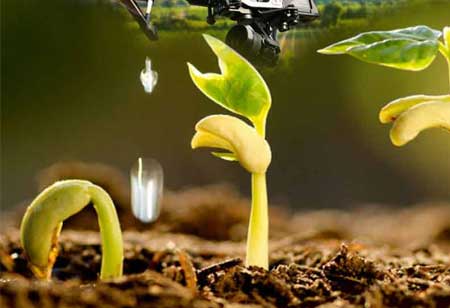Thank you for Subscribing to Agri Business Review Weekly Brief
Importance Of Drone Technology in Sustainable Agriculture
With the world supply at an all-time high and commodity prices at an all-time low due to increasing food production and consumption demands, the modern farming industry is at a crossroads.

By
Agri Business Review | Thursday, November 24, 2022
Stay ahead of the industry with exclusive feature stories on the top companies, expert insights and the latest news delivered straight to your inbox. Subscribe today.
With the extensive terrain that needs surveying, drones provide increased efficiency, enabling users to capture high-resolution imagery more swiftly than alternative methods.
Fremont, CA: With the world supply at an all-time high and commodity prices at an all-time low due to increasing food production and consumption demands, the modern farming industry is at a crossroads.
There is a higher need than ever before for farmers and agronomists across the globe to enhance resource management in response to clamping budgets, while the "farm to fork" movement has observed increasing pressure for improved product traceability as consumers turn more interested in the origin of the goods they acquire and how they were grown.
Moreover, climate change continues to form new layers of complication for the agriculture industry in defending the security of the supply chain. Swiftly evolving environmental conditions further exacerbate these challenges, and the latest figures display that the overall damage to agriculture across Europe from climate variation could be as great as 16% by 2050.
Therefore, optimizing sustainability credentials to reduce the impact on the health and well-being of the public and the planet will stay a priority, especially as enhanced sustainability measures could also offer additional economic benefits by allowing agriculture professionals to concentrate their resources and efforts more effectively.
The Rise of Precision Agriculture
To balance feeding the planet with decreasing global emissions, ambitious plans have been implemented.
Precision agriculture practices, which can support farmers' better-informed decisions, have evolved significantly over late years with the global market. While drones, also called unmanned aerial vehicles (UAVs), have not yet made it into the common agriculture space, they are playing an increasingly major role in precision farming, helping agriculture professionals take the lead with sustainable farming practices also protecting and growing profitability.
The employment of global positioning system (GPS) technology and geographic information system (GIS) tools form a great part of these precision agriculture practices enabling fine-scale monitoring with mapping of yield and crop parameter details within fields.
These offer more intense and efficient cultivation procedures, which can support farmers adjust fertilizer prescriptions or recognize crop diseases before they turn widespread. With additional data at their fingertips, farmers can make decisions according to economic and environmental factors – for instance, by optimizing fertilizer treatment and applying just the correct amount at the right time, high-cost and environmental savings can be made.
The Adoption of Drones
The application of drones in the agriculture industry is constantly growing as part of an effective method for sustainable agricultural management that enables agronomists, agricultural engineers, and farmers to support and streamline their operations through robust data analytics to obtain effective insights into their crops.
Crop monitoring, for instance, is made simpler by employing drone data to correctly plan and make ongoing advancements, such as ditches and evolving fertilizer applications. In addition, products can be accurately traced from farm to fork utilizing GPS locations for each point in the journey, other than more traditional time and labor-intensive data collection.
UAVs are particularly useful for carefully monitoring large farmland areas, considering factors such as slope and elevation, for instance, to identify the most appropriate seeding prescriptions. The technology has also been beneficial in gaining an extensive overview of plant emergence and population. More precise data can help with replanting decisions, thinning and pruning activity, and improving crop models.
Critically, the high-resolution nature of drone data can be employed to assess the fertility of crops, enabling agricultural professionals to more properly apply fertilizer, decrease wastage, and plan – and solve – irrigation systems. The technology can also be specifically effective following natural disasters, such as floods, to help farmers assess damage across terrains that may not be smoothly accessible on foot.
Taking Drones Further
The possibility of UAVs in the advancement of sustainable agriculture is huge.
Given the extensive terrain that needs surveying, drones provide increased efficiency, enabling users to capture high-resolution imagery more swiftly than alternative methods. In these volatile market conditions, estimating annual profit can help direct decision-making and manage expectations. Moreover, UAVs are now noticed as a safer option for difficult mapping areas, like uneven or expansive fields, that can be dangerous for operators – especially compared to terrestrial techniques, which must be carried out on foot.
Where satellites and manned aircraft have traditionally been used to monitor agriculture, UAVs are rapidly turning recognized as a more accurate and cost-effective replacement.
Studies have demonstrated that drone imagery gives a higher rate of accuracy and resolution – even on cloudy days. While traditional terrestrial approaches to collecting data in challenging weather conditions could delay projects for days, exact crop health assessments can be made annually using UAVs.





